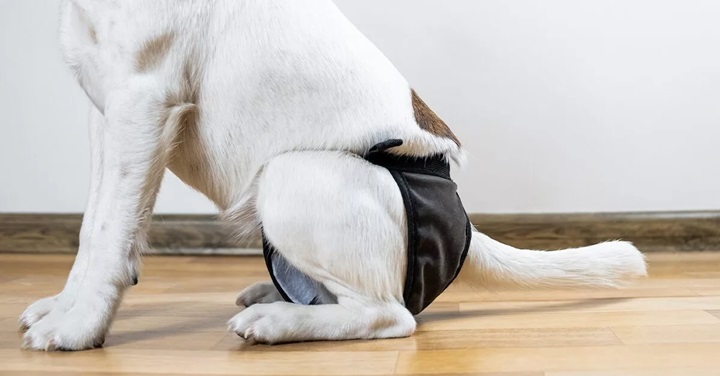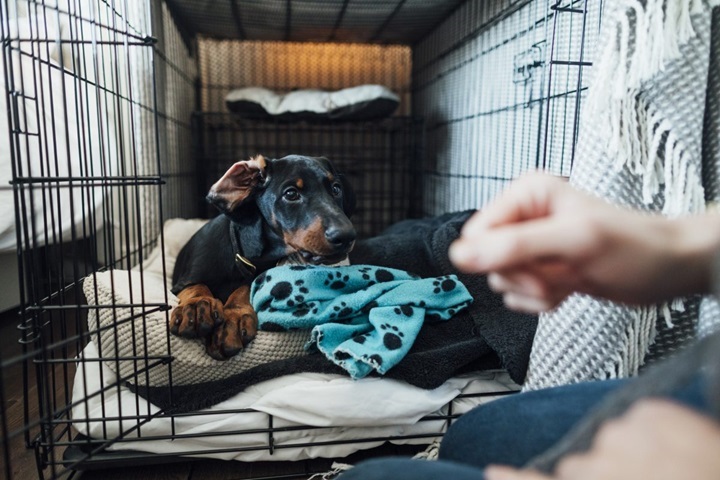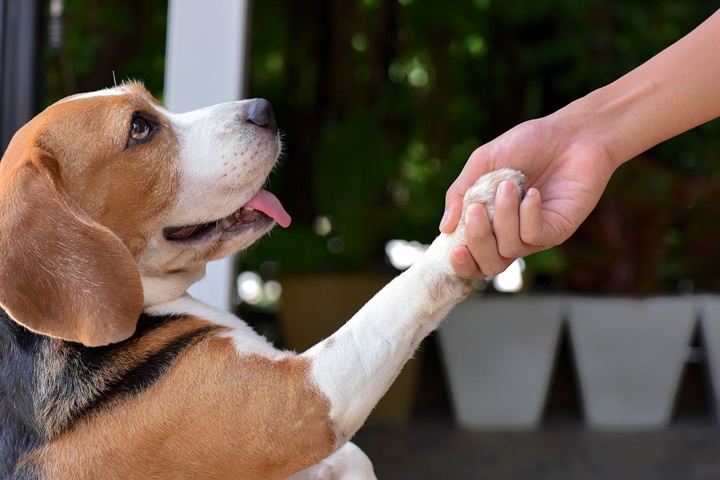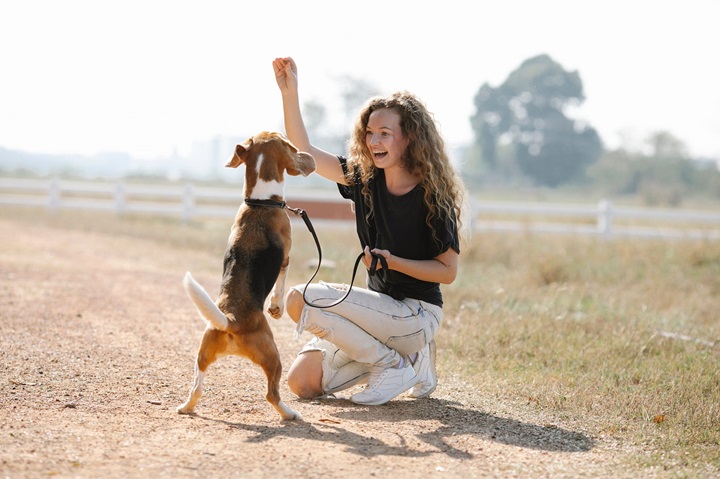Potty Training Your Puppy: Everything You Need for Tail-Wagging Success
Potty training your new puppy comes with its set of challenges, but it’s a pivotal step in fostering a strong and harmonious relationship. Proper training is not just about preventing messes, it’s also about keeping your furry pal healthy and making life easier for both of you.
Consistency, positive reinforcement, and patience are just some of the key components you need for tail-wagging success. To assist you through this process, here’s a helpful list of items and tips that can make the training smoother for you and your canine companion.
Diapers

Introducing puppy diapers during the initial stages of potty training can provide temporary assistance and aid in the transition to proper potty habits. While it’s important to emphasise outdoor or designated indoor potty areas, diapers can be a practical solution to manage accidents, especially during the early stages of training.
When shopping for diapers or wraps for your puppy during potty training, it’s essential to choose the right type to prevent messes. Make sure you buy pet-friendly and easy-to-use diapers for dogs in the correct size to prevent leaks and discomfort for your pup. A snug but not overly tight fit is ideal to prevent messes while allowing your puppy to move comfortably.
Disposable waistband diapers or wraps designed specifically for dogs are available options. These diapers feature an adjustable fit and provide a convenient solution to contain accidents. Disposable waistband diapers are great for quick changes and dumping, especially during the initial stages of potty training. Wraps or belly bands serve male dogs and are useful in preventing marking or accidents indoors.
Another benefit of diapers for dogs is that they can be extremely helpful when travelling or visiting unfamiliar places, providing a secure option for your puppy to relieve themselves while away from home. They offer a sense of security to your pup in unknown environments, aiding in their comfort and reducing anxiety related to potty breaks.
Using diapers as a short-term solution offers flexibility, allowing you to gradually guide your puppy towards appropriate potty behaviour. It’s important to note that diapers are not a substitute for proper training but serve as a temporary aid while your puppy learns. They can prevent furniture or carpet damage, making cleanup easier and minimising stress during the training process.
Make sure you keep an eye on your puppy’s comfort and behaviour when using diapers or wraps, so you know when to change them. Remember, they should complement your training efforts, gradually reducing dependence as your puppy progresses in learning appropriate potty habits.
Potty Pads or Designated Outdoor Areas
When potty training your puppy, having designated areas, like potty pads indoors or a specific spot outdoors, is essential for effective training. Potty pads create a recognisable spot for your puppy to relieve themselves inside, gradually transitioning to outdoor spaces.
These designated areas establish a routine, teaching your pup where it’s appropriate to go. Consider starting with potty pads or a chosen outdoor spot early on, guiding your puppy to associate these places with pottying. As you progress, gradually reduce indoor options to reinforce outdoor habits.
Crate or Confined Space

Using a crate or a confined space is vital during potty training. It provides a safe, controlled area where your pup can learn bladder control and the importance of holding their bladder until you take them outside. A properly sized crate becomes your pup’s den, encouraging them not to soil their living space.
When you can’t supervise, this space prevents indoor accidents, reinforcing the idea that pottying happens outside. Introducing your pup gradually to the crate helps them see it as a cosy retreat. This tool not only assists in potty training but also fosters discipline and a sense of security for your furry friend—benefiting both of you during this training process.
Regular Schedule
Establishing a regular schedule is crucial for successful puppy potty training. Consistency is key! Create a schedule for designated times to have meals, engage in playtime, and take potty breaks.Take your puppy outside as soon as you wake up, after eating, playing and before going to bed. Keep track of when your furry friend tends to need to go. Stick to the routine, as it helps regulate your pup’s bodily functions and teaches bladder control. A regular schedule creates predictability for your puppy, reducing accidents and speeding up the learning process.
Positive Reinforcement

Positive reinforcement is a powerful tool in potty training, and you play a pivotal role in making it effective. When your pup relieves themself in the designated spot, praise them enthusiastically using a cheerful tone. You can also offer small, tasty treats immediately after they’ve finished.
Use a cue word or phrase like “good potty” consistently during the act. By associating positive experiences with the desired behaviour, your pup will understand what makes you happy. Remember, timing is crucial—offer praise and treats promptly after they’ve finished.
Cleaning Supplies
Accidents are part of puppy potty training, so having reliable cleaning supplies can be of great help. Mishaps happen despite our best efforts, but a quick and thorough cleanup is crucial. Enzymatic cleaners specially designed for pet messes effectively eliminate odours and stains, deterring your pup from revisiting the same spot.
Keep these supplies handy to tackle accidents promptly, preventing lingering scents that might encourage your puppy to use the same spot again. Being prepared with the right cleaning tools keeps your environment clean, minimises indoor accidents, and supports the training process by removing traces of previous mishaps.
Patience and Consistency

Patience and consistency are critical when potty training puppies, much like caring for babies. Both require understanding and tolerance as they learn basic skills. Since this is a learning process for your furry companion, patience is key as they grasp new habits. Consistency in your actions, schedule, and training methods reinforces what you’re teaching. Be patient when accidents occur, as they’re part of the learning curve.
Consistent routines and responses help your pup understand expectations. Avoid sudden changes in the training approach, as this might confuse them. With patience, your pup will gradually learn, and your steady, consistent guidance will reinforce good habits, leading to a successful and reliable potty-trained pet in the long run.
Monitoring and Supervision
During puppy potty training, you should constantly monitor and supervise your dog. Keep a close eye on your pup’s behaviour, especially after meals, playtime, or naps, as these are common times for potty needs. Supervision allows you to anticipate when they might need to go and guide them to the designated spot promptly.
If you can’t watch them closely, confine them in a safe space or crate. Monitoring helps prevent accidents by intervening at the right times and reinforces the desired behaviour by guiding them to the correct potty area consistently. This attentive approach accelerates learning and establishes good habits for a successful potty-training journey.
